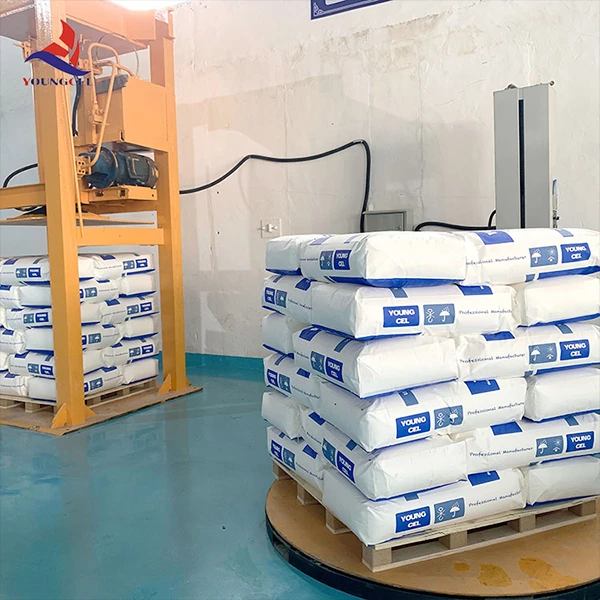The Role of HPMC in Chemical Adhesives
Hydroxypropyl Methylcellulose (HPMC) has garnered significant attention in recent years as a versatile and effective ingredient in the formulation of chemical adhesives. This cellulose derivative, known for its unique properties, plays a critical role in enhancing the performance and functionality of various adhesive systems. In this article, we will delve into the characteristics of HPMC, its applications in adhesives, and the benefits it offers.
Understanding HPMC
HPMC is a water-soluble polymer derived from cellulose, and it is primarily used for its thickening, bonding, and film-forming properties. The chemical structure of HPMC includes hydroxypropyl and methyl groups, which impart solubility and viscosity control in aqueous solutions, making it a preferred choice in many industrial applications. Its multifunctional nature allows HPMC to act not only as a thickener but also as a stabilizer and emulsifier.
Applications in Adhesives
In the realm of chemical adhesives, HPMC is utilized in various formulations, including construction adhesives, coatings, and pastes. One of its primary applications is in tile adhesives, where it enhances the workability and adhesion properties. The inclusion of HPMC allows for improved spreadability on surfaces and provides excellent bonding strength. Additionally, it contributes to the adjustment of open time, which is the duration in which the adhesive remains workable after application. This is particularly vital in construction, where timing can significantly affect installation efficiency.
HPMC also plays a crucial role in the formulation of pressure-sensitive adhesives (PSAs), commonly found in tapes and labels. The polymer’s excellent adhesion properties ensure that PSAs stick effectively to a variety of substrates, maintaining adhesion even in challenging conditions. Its controlled viscosity also aids in achieving a uniform coating thickness, which is essential for optimal performance.
chemic adhes hpmc

Benefits of HPMC in Adhesives
The inclusion of HPMC in adhesive formulations offers several advantages. Firstly, it contributes to the overall performance of adhesives by enhancing their rheological properties. The thickening effect of HPMC enables better product consistency and application control, which is essential for achieving desired adhesion and fulfillment of application requirements.
Moreover, HPMC is known for its compatibility with various other components in adhesive systems, such as resins, solvents, and fillers. This compatibility allows formulators to create more complex adhesive systems that meet specific performance criteria without compromising on quality. The ability of HPMC to blend seamlessly with other ingredients helps in achieving optimal balance between viscosity, adhesion, and drying time.
Another notable benefit of HPMC is its environmentally friendly profile. As a cellulose derivative, it is biodegradable and non-toxic, making it an appealing choice for manufacturers who prioritize sustainability in their product formulations. The use of biodegradable materials in adhesives aligns with increasing regulatory pressures and consumer demand for eco-friendly products.
Conclusion
In summary, Hydroxypropyl Methylcellulose stands out as a critical component in the formulation of chemical adhesives. Its unique properties and versatility make it instrumental in enhancing the performance of various adhesive types, including construction adhesives and pressure-sensitive adhesives. As industries continue to seek innovative and sustainable solutions, HPMC’s role in adhesive technology is likely to grow, paving the way for more efficient and environmentally responsible formulations. With the ongoing advancement in material science, the future of HPMC in adhesives remains promising, as formulators leverage its qualities to meet the evolving demands of the market.
-
Rdp Powder: Key Considerations for Wholesalers in the Building Materials IndustryNewsJul.08,2025
-
Key Considerations for Wholesalers: Navigating the World of Hpmc - Based ProductsNewsJul.08,2025
-
Hpmc Detergent: Key Considerations for WholesalersNewsJul.08,2025
-
Key Considerations for Wholesalers: China Hpmc For Tile Adhesive, Coating Additives, Concrete Additives, and MoreNewsJul.08,2025
-
Crucial Considerations for Wholesalers: Navigating the World of Construction MaterialsNewsJul.08,2025
-
Key Considerations for Wholesalers Sourcing Additive For Cement, Additive For Concrete, Additive For Putty from Additive Manufacturer Shijiazhuang Gaocheng District Yongfeng Cellulose Co., Ltd.NewsJul.08,2025




